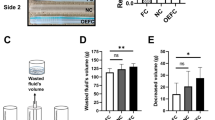Abstract
The treatment for urinary incontinence, a common condition affecting a considerable number of older and disabled members of society, involves the use of a Foley catheter for drainage of the bladder. The basic design of the catheter has remained the same for over seventy years. Despite modifications to the materials used there has been very little research directly comparing the physical properties of the different types of catheter. This study developed a range of tests to enable comparison of the resistance to kinking, flow rate properties and the retention forces of both latex-based and all-silicone catheters. The results indicated that the all-silicone device had superior resistance to kinking and better flow properties when compared to the latex-based catheters. However, greater retention forces were recorded for the all-silicone device, in both the inflated and deflated condition, indicating that much more force would be required to remove the this type of catheter.
Similar content being viewed by others
References
L. WINSON, British J. Nursing 6 (1997) 1229.
I. POMFRET, Nursing Standard 14 (2000) 46.
A. EVANS, D. PHEBY, et al., British J. Community Nursing 5 (2000) 477.
N. S. MORRIS, D. J. STICKLER and R. J. C. MCLEAN, World J Urol 17 (1999) 345.
J. D. DENSTEDT, T. A. WOLLIN and G. REID, J. Endourology 12 (1998) 493.
L. L. SULLIVAN, B. W. STEINERT, et al., ASEE Annual Conference Proceedings 2 (1995) 2168.
N. S. MORRIS and D. J. STICKLER, Urol Res 26 (1998) 275.
N. SABBUBA, G. HUGHES and D. J. STICKLER, BJU Intl. 89 (2002) 55.
D. J. STICKLER and N. MORRIS et al. Eur. J. Clin. Microbiol. Infect. Dis. 17 (1998) 649.
D. J. STICKLER and G. HUGHES, ibid. 18 (1999) 206.
British Standard 3212. Rubber Tubing. (1997). [WWW] http://bsonline.techindex.co.uk/
British Standard EN 1618. Catheters other than intravascular catheters---test methods for common properties. (1997). [WWW] http://bsonline.techindex.co.uk/
J. PARKIN, J. SCANLAN, M. WOOLLEY, et al., BJU Intl. 90 (2002) 666.
J. ROBINSON, Nursing Standard 17 (2003) 33.
M. L. GONZALGO and P. C. WALSH, Urology. 61 (2003) 825.
S. DANESHMAND D. YOUSSEFZADEH and E. C. SKINNER, Urology. 59 (2002) 127.
Author information
Authors and Affiliations
Corresponding author
Additional information
Author to whom all correspondence should be addressed.
Rights and permissions
About this article
Cite this article
Lawrence, E.L., Turner, I.G. Kink, flow and retention properties of urinary catheters part 1: Conventional foley catheters. J Mater Sci: Mater Med 17, 147–152 (2006). https://doi.org/10.1007/s10856-006-6818-0
Received:
Accepted:
Issue Date:
DOI: https://doi.org/10.1007/s10856-006-6818-0




